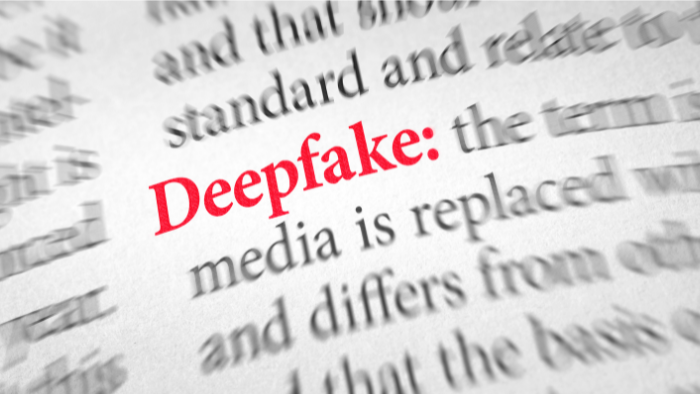In recent times, the proliferation of fake news supported by seemingly authentic images has become increasingly common. This particular form of multimedia manipulation is referred to as a deepfake. One of the most striking examples is the fake photo depicting the explosion at the Pentagon, which led to a significant stock market crash. Another instance is a video featuring former President Obama delivering a speech on fake news and disinformation, a video that was never actually filmed.
The phenomenon of deepfakes has ignited a series of debates concerning the ethical, social, and political implications of artificial intelligence usage.
But what exactly are deepfakes and why do they pose a risk for everyone?
In this article, we aim to answer this question, outline methods to identify them, and explore strategies to defend against them.
Understanding Deepfakes
Deepfakes are falsified photos, videos, or audios created by artificial intelligence to appear genuine while, in reality, they are manipulations. The term “deepfake” is a fusion of “deep learning” (which can be simplified as “machine learning”) and “fake.” This technique relies on training machine learning algorithms with substantial datasets to generate images, videos, or audios that mimic reality.
The Perils of Deepfakes
While these images may sometimes appear harmless or even amusing, they pose a substantial threat to individuals. Let’s examine a few reasons why:
- Propagation of Misinformation: Deepfakes contribute to the spread of false news, misleading information, and conspiracy theories, eroding trust in journalism and the authenticity of online information. This can have detrimental societal consequences, shaping public opinions and distorting perceptions of reality.
- Threat to Privacy and Reputation: Compromising or defamatory videos can be created, depicting individuals in fabricated embarrassing, offensive, or illegal scenarios. This can harm the reputation and privacy of those involved, leading to severe personal, professional, and social repercussions.
- Political Manipulation: Through deepfakes, it’s possible to create videos of politicians or influential leaders engaging in speeches or actions that never occurred. This can significantly impact elections, political decisions, and government stability, eroding public trust in leaders and institutions.
- Potential for Criminal Activities: Deepfakes can be employed for criminal purposes such as extortion, identity theft, and fraud. For instance, they can be used to create fake videos of individuals authorizing financial transactions or divulging sensitive information, causing substantial financial harm and compromising people’s security.
- National Security Impact: In general, deepfakes can pose a threat to national security and potentially disrupt international relationships and geopolitical stability.
Recognizing Deepfakes
Given the high quality of the content produced, identifying a deepfake is not easy. However, there are warning signs that can help detect fabricated content. Analyzing visual anomalies is a good starting point. Pay attention to small details within the video, such as imperfections in the image, blurriness or smudging around edges, inconsistencies in lighting or perspective, and unnatural movements. Lack of synchronization between voice and image is another indicator. These anomalies can suggest digital manipulation.

Another aspect to consider is temporal inconsistency. Check if actions or events in the video align with the temporal context. For instance, if a character displays a technological device that wasn’t available during the time the video was recorded, it might be a sign of a deepfake.
It’s also good practice to cross-reference received information with reliable sources, which is useful for combating fake news as well. Newspapers, press agencies, or official sources can be employed to fact-check information.
Lastly, investigating the video’s origin can provide further insight into its credibility. Knowing the author of the video and the distributor can offer indications of its authenticity.
Strategies to Defend Against Deepfakes
Knowledge is the primary weapon at our disposal: being aware of the existence of deepfakes and spreading this information is the initial step toward building awareness and enabling defense.
Various organizations and researchers are developing automated verification tools to identify deepfakes. These tools can analyze multimedia content to detect signs of digital manipulation.
Prioritizing authoritative and verified sources can help reduce the spread of such images. Verifying the source before sharing can contribute to countering misinformation.
Cultivating a critical mindset toward online content is essential to safeguard against misinformation. Carefully evaluate information, question its reliability, check sources, and seek confirmation from multiple sources before accepting something as absolute truth.
Deepfakes present a significant challenge in our digital society. Their ability to manipulate virtual and real reality raises concerns about privacy, security, and the dissemination of false news. Recognizing deepfakes requires attention and awareness, while defending against them necessitates a combination of education, verification tools, and skepticism toward online content. Collaboration among consumers, researchers, organizations, and governments is crucial to addressing this emerging threat and protecting our society from deepfake misuse.


Follow us on: